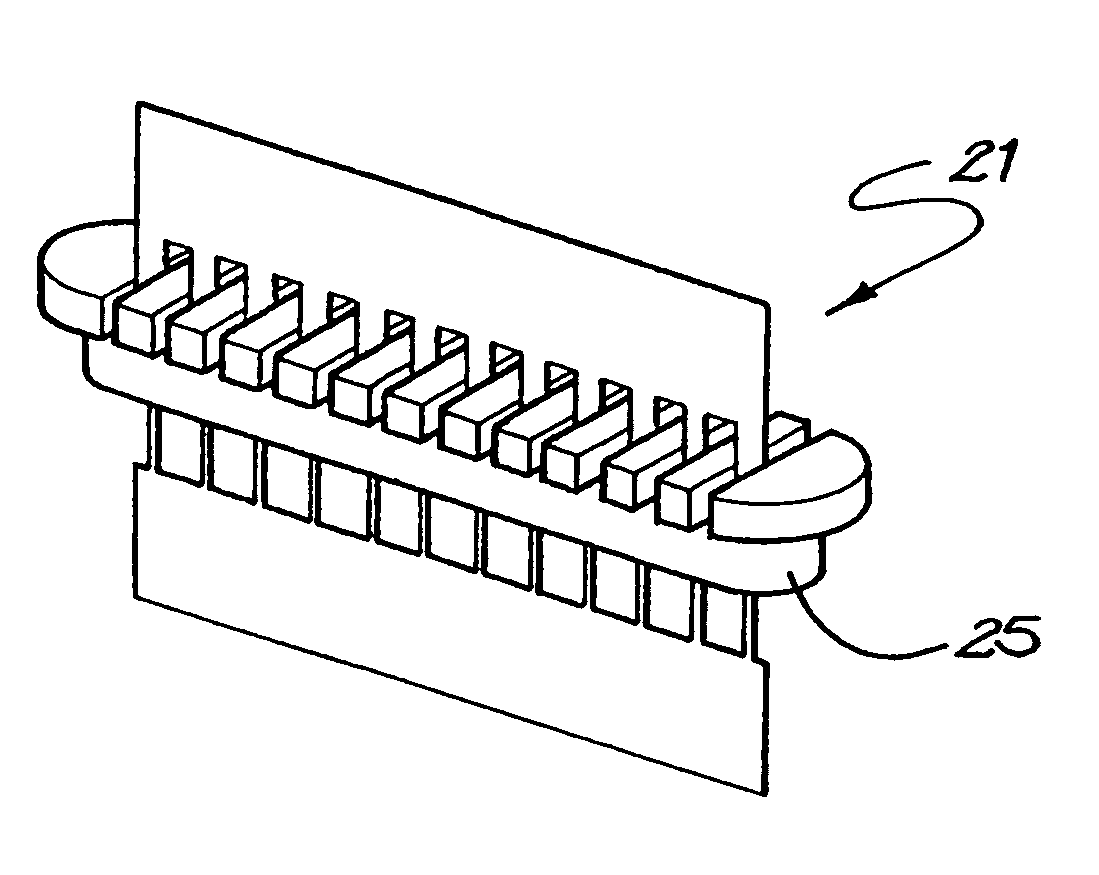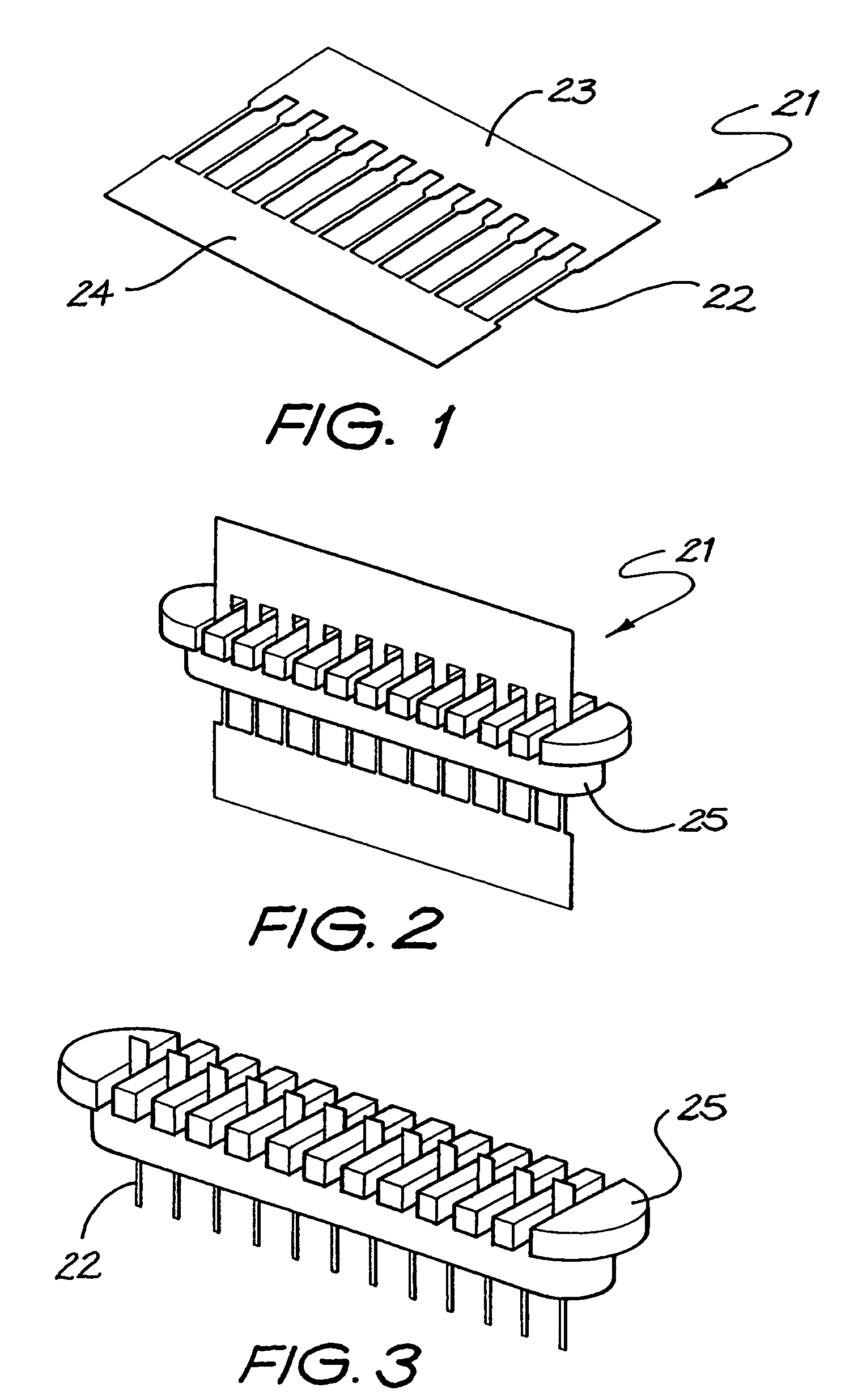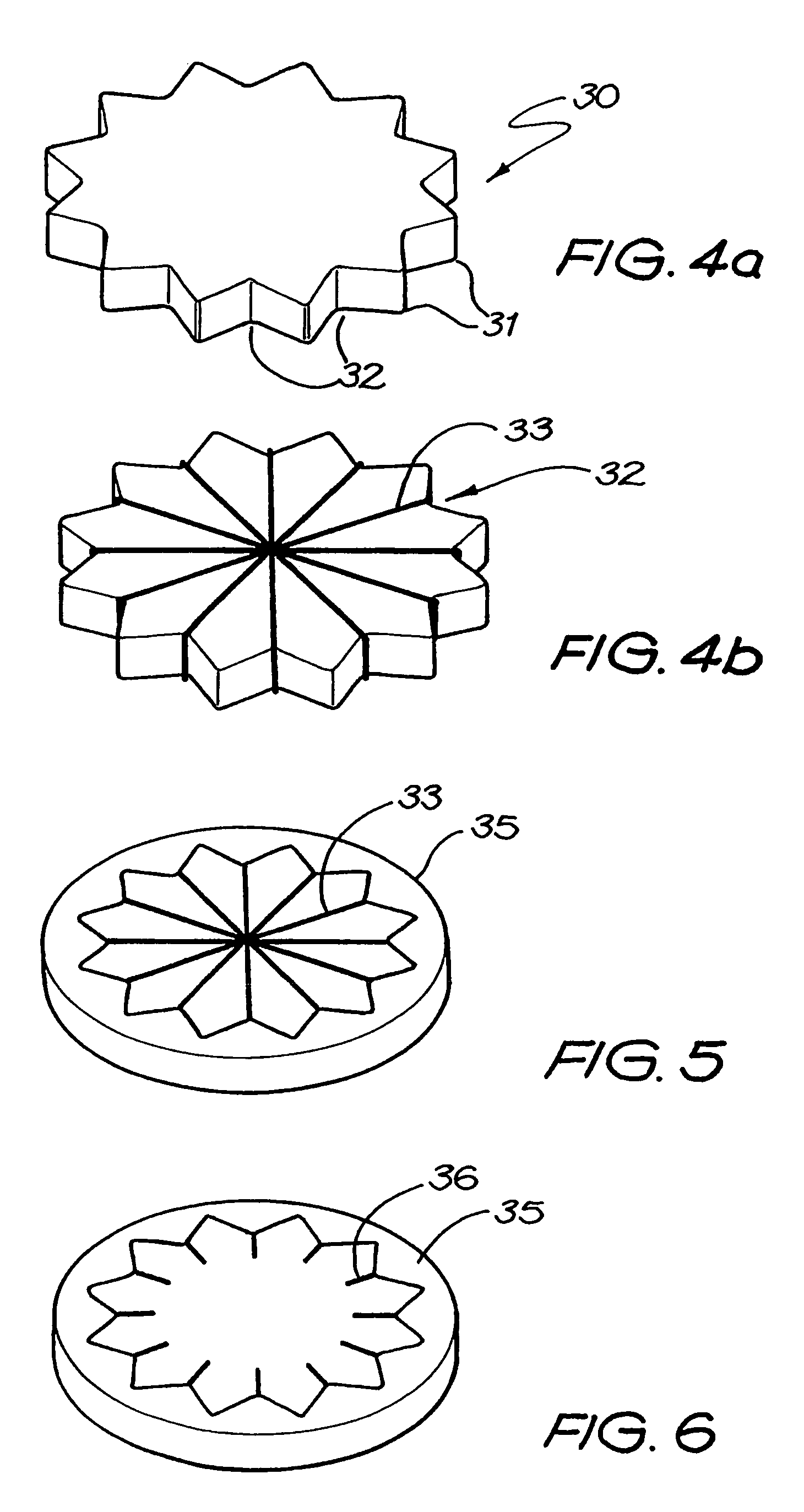Feedthrough for electrical connectors
a technology for electrical connectors and feedthroughs, applied in the direction of contact member manufacturing, contact member assembly/disassembly, medicine/surgical connectors, etc., can solve the problems of unsatisfactory leakage rate on testing, low yield, tedious and slow, etc., to prevent the transfer of potentially dangerous materials, reduce the perimeter of the cross section, and increase the hermetic
- Summary
- Abstract
- Description
- Claims
- Application Information
AI Technical Summary
Benefits of technology
Problems solved by technology
Method used
Image
Examples
Embodiment Construction
[0151]The steps of one embodiment of a method of forming an electrically conducting feedthrough according to the present invention are depicted in FIG. 11.
[0152]The method 10 comprises a first step 11 of forming an electrically conductive structure comprising a sacrificial component and non-sacrificial component. Different examples of such structures are depicted in FIGS. 1, 4b, 7, and 10b.
[0153]The method further comprises a step 12 of coating or moulding a non-electrically conductive insulative member on to at least a portion of the non-sacrificial component and not on to at least a portion of the sacrificial component of the conductive structure.
[0154]Still further, the method comprises a step 13 of then removing at least that portion of the sacrificial component of the conductive structure on to which the insulative member has not been coated or moulded.
[0155]Following removal of the sacrificial component of the conductive structure, the green body of the insulator can undergo ...
PUM
| Property | Measurement | Unit |
|---|---|---|
| diameter | aaaaa | aaaaa |
| temperature | aaaaa | aaaaa |
| temperature | aaaaa | aaaaa |
Abstract
Description
Claims
Application Information
 Login to View More
Login to View More - R&D
- Intellectual Property
- Life Sciences
- Materials
- Tech Scout
- Unparalleled Data Quality
- Higher Quality Content
- 60% Fewer Hallucinations
Browse by: Latest US Patents, China's latest patents, Technical Efficacy Thesaurus, Application Domain, Technology Topic, Popular Technical Reports.
© 2025 PatSnap. All rights reserved.Legal|Privacy policy|Modern Slavery Act Transparency Statement|Sitemap|About US| Contact US: help@patsnap.com



